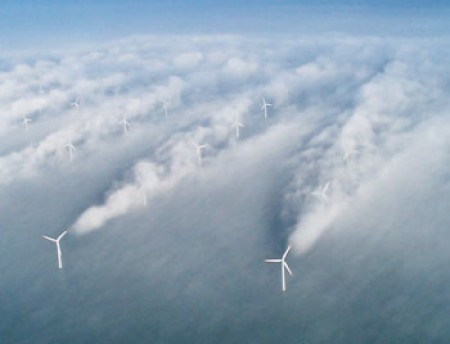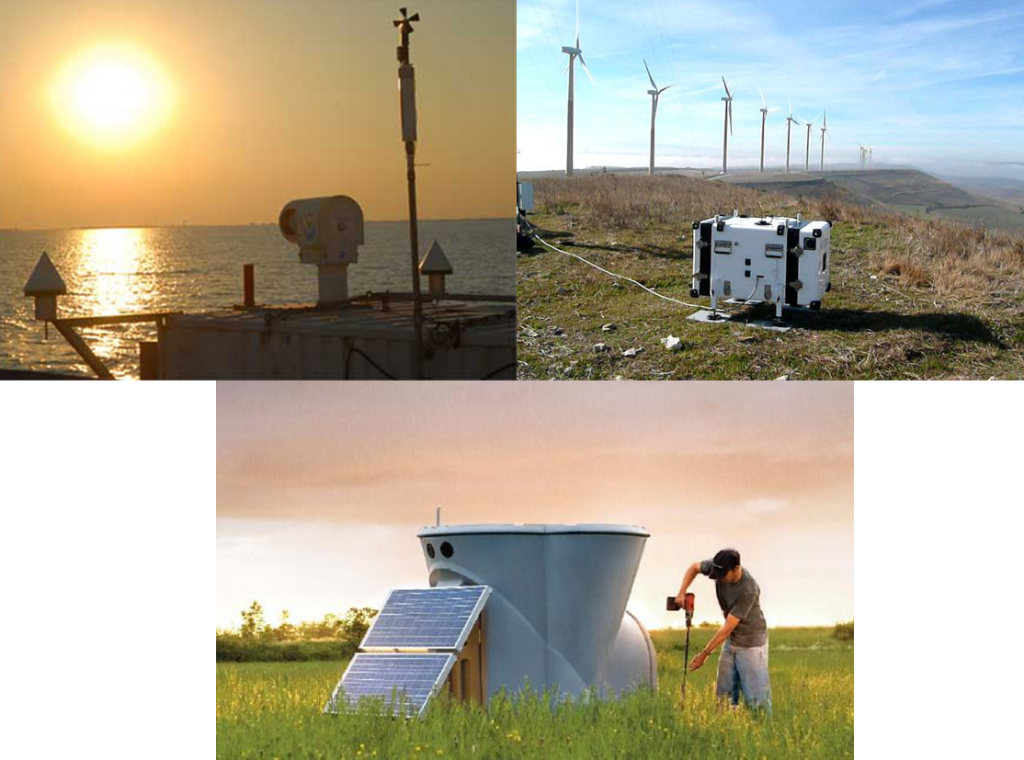
Not only does it appear that there is enough latent energy in wind to supply all our needs here on Earth, but our use of wind energy is seen to have no climate consequences. So say climate science researchers from Lawrence Livermore National Laboratory who have studied the impact of wind turbines on the atmosphere. The reason for the study – a previous concern raised by researchers that demonstrated wind turbines could alter local climate.
In their study the Lawrence Livermore team looked at how much power could be theoretically harvested from wind. In addition they looked at deployment of high-altitude wind turbines to see how much additional wind power capacity could be created. They also studied the implications to climate should high-altitude turbines be deployed.
How do wind turbines influence climate? Turbines alter airflow as the wind passes over the spinning blades. This creates drag. Put up enough 30 meter towers and theoretically you could alter wind speeds near the ground and as a result, local climate. The saturation wind power potential point is the moment when turbine capacity begins to degrade wind speeds. It represents the theoretical limit and energy capacity that we can derive from wind.
The Lawrence Livermore researchers calculated total wind energy capacity for the planet at ground level and in the upper atmosphere at 2,200 terawatts, 400 terawatts from ground-level wind and 1,800 terawatts from the upper atmosphere. Compare that to total energy demand of 18 terawatts today and you can see that wind can provide us with more than all of our current and future needs.
A Stanford-University of Delaware study is also shedding light on the theoretical limits of wind turbines. Researchers at these two universities have calculated that 4 million wind turbines, half deployed onshore and the remainder offshore, could supply between 5 and 7.5 terawatts of power with no significant climatic impact. Triple that number and wind could meet the current energy demands of the entire planet with capacity to spare.
Studying the Effect of Wind Turbines
How do researchers study wind turbine interaction with the atmosphere. The National Oceanic and Atmospheric Administration or NOAA in the United States has developed High Resolution Doppler Lidar. Also known as HRDL, the technology produces accurate three-dimensional portraits of atmospheric activity capturing information covering a column of air measuring 1,000 meters (3,280 feet) in height and 7,000 meters (4.3 miles) downwind. This allows researchers to study real-world wake effects from wind turbines. Another technology, a WindCube Lidar, is a ground-based device placed at wind farm locations to capture measurements at various levels in the air column across the entire site. Add wind profiling technology such as the Triton Sodar, a portable, solar-powered device that can be deployed inside a wind farm to study the impact of the rotating blades on the local atmosphere.

Of course the challenge for wind is its variability. But with such large numbers of turbines in play, there would be enough capacity to meet energy demands worldwide even if the wind isn’t blowing at a number of sites.
Where would wind turbines least interfere with existing human populations while taking advantage of the most reliable wind conditions? Researchers suggest locations such as the Gobi Desert of Central Asia, the Sahara Desert of North Africa, and the North American Great Plains. And because a wind turbines footprint on land surfaces is relatively small wherever deployed land use is not restricted. That’s what makes wind such an attractive option to meet worldwide energy demand without burning fossil fuels.









